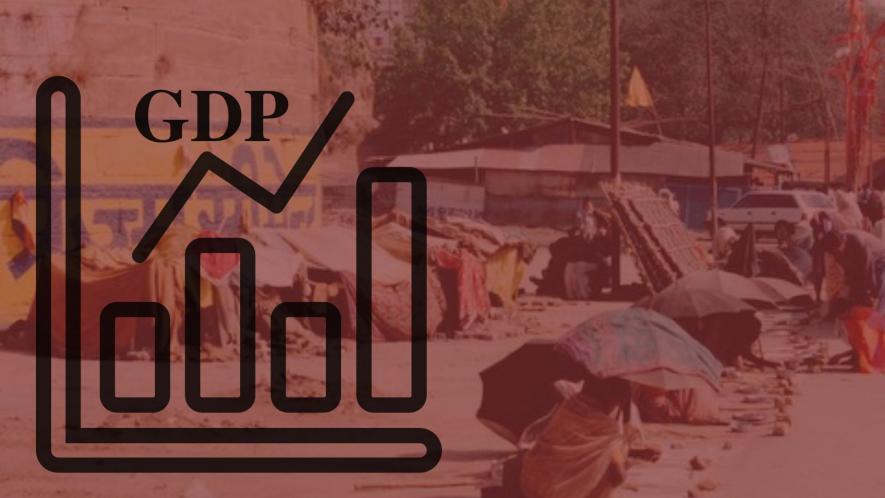Problems With GDP Growth Fetishism

The post-Second World War period had seen a spate of welfare state measures in the advanced capitalist countries, especially in Europe, in emulation of what the Soviet Union was effecting. Capitalism had to accept these measures, notwithstanding its hostility to them, because it was in the midst of an existential crisis, weakened by the war, shaken by the upsurge in working-class anger, and terrified by the spread of socialism in Eastern Europe.
With the subsequent consolidation of its position, however, capitalism’s hostility to welfare state measures manifested itself openly. It tried to roll them back, though, thanks to the resistance of the workers, it did not have the success it would have wished. Even a person like Margaret Thatcher could not succeed in dismantling the National Health Service in Britain.
At the same time ironically, capitalism derived a degree of legitimacy from the welfare state, with its claim that, far from being predatory, it was indeed a system guaranteeing people’s welfare.
The maintenance of the welfare state, however, has meant a substantially higher tax-GDP (gross domestic product) ratio compared with the earlier period in European countries and also compared to the current figures for countries that have skimped on welfare provision.
In the list of countries arranged in descending order of tax-GDP ratio for the year 2020, as many as 29 of the top 30 countries are from Europe, both West, and East, that is, countries which have had a legacy of either communist or social democratic rule; the only non-European country is Cuba, which again is not only under communist rule but whose welfare state measures are admired all over the world.
Communist governments adopting welfare state measures and raising the resources required for this purpose through high levels of taxation, and this arrangement persisting even after the collapse of communism, should not come as a surprise. What is striking, however, is that West European social democracy, too, has maintained a high tax-GDP ratio to finance its welfare state provisions.
France tops the list with a tax-GDP ratio of 46.2%, followed by Denmark (46.0%), Belgium (44.6%), Sweden (44.0%), Finland (43.3%), Italy (42.4%), and Austria (41.8%). The inescapable conclusion that emerges is that the maintenance of a welfare state requires heavy taxation, that is, heavy interference by the State in the pattern of income distribution that is spontaneously generated by the market.
None of these European countries has been characterised by GDP growth rates as impressive as those of the high-growth economies of today, even in the heyday of the so-called Golden Age of capitalism in the immediate post-war years. Their rates of GDP growth have fallen to even lower levels in the period after the collapse of the housing bubble in 2008.
India, by contrast, while its officials keep patting themselves on the back for its being a supposedly high-growth economy, has abysmal welfare state measures, and, not surprisingly, a tax-GDP ratio (18.08%) that is toward the lower end of the scale.
Three propositions follow from these findings. First, the so-called “trickle-down” effect of GDP growth is a completely vacuous concept. The outcome of the functioning of unfettered capitalism can never succeed spontaneously in raising the level of welfare of the mass of the working people. This is because capitalism can never function without a reserve army of labour, one of whose main functions is to keep down wages even as labour productivity keeps increasing, so that the share of surplus in social output increases, leading to larger consumption by the capitalists and their “hangers on”.
The workers do not automatically get the benefits of economic growth under capitalism. True, if they organise themselves, they can fight for and even obtain better living conditions; but in such a case they would also force the State to increase the tax-GDP ratio with which to provide them with a higher social wage. The crucial determinant, in other words, is their capacity to fight effectively, not the rate of economic growth whose benefits are supposed to “trickle down”.
Exactly the same can be said about the belief that despite low levels of taxation, a high GDP growth rate will automatically put so many resources into the government’s hands that it will be able to spend adequate amounts for raising the welfare of the working people. This is a completely misplaced belief: the transition to a welfare State never occurs by stealth or by small accretions of supposedly benevolent measures; it occurs as a break-through, of which the mobilisation of the requisite resources through a substantial rise in the tax-GDP ratio is a reflection.
The second proposition is the following. Not only does GDP growth not lead to a welfare state per se, but, in fact, fetishising GDP growth becomes a means of preventing any transition toward a welfare State. Of creating a false narrative that the working people would become actually better off by allowing transfers of resources to capitalists so that they can undertake larger investment and thereby usher in larger GDP growth, than by insisting on transfers toward themselves for the creation of a welfare State. The latter position is even pejoratively called “populism” and debunked as being wasteful and short-sighted because it entails the distribution of so-called “freebies”.
This fetishisation of GDP growth is used as the argument for keeping the tax-GDP ratio low, for any increase in it, which would typically require taxing the capitalists, is supposed allegedly to destroy their “enterprise”, and hence their inducement to invest, thereby damaging GDP growth.
The reasoning here, of course, is analytically wrong: capitalists do not invest more just because they have larger resources at their disposal; their investment decisions are governed by the expected growth of the market and hence do not increase simply because they are given larger resources through transfers. But even this analytically-erroneous argument is used to discredit any demand for a welfare State and subvert any move toward it.
What the experience of welfare states around the world shows, however, is that the tax-GDP ratio has got to be increased greatly for achieving such a state, involving substantially increased taxation of the capitalists and completely ignoring the argument about its damaging growth prospects. The demand for a welfare State, in other words, must overcome the fetishisation of GDP growth, which is part of bourgeois apologetics.
The third proposition relates to the dialectics of exclusion. As resource transfers are made from government budget toward the capitalists to stimulate GDP growth, and as the relative magnitude of transfers increase with the onset of recession and stagnation that typically constitutes the denouement for neo-liberal capitalism, fewer resources are left even for paltry welfare expenditure that was being made earlier from the budget. This results in privatisation of education, health, and other essential services, which leads to the further exclusion of working people from all these services.
Since the transfers made to capitalists do not cause any increase in investment or even produce much immediate increase in their consumption, the reduction in welfare expenditure that matches such transfers, has the effect of reducing overall aggregate demand. This has the effect of lowering the GDP growth rate so that the effort to raise the growth rate in this manner has paradoxically the very opposite effect, but this becomes an excuse for further increases in transfers to capitalists. This has the further effect of reducing the growth rate. Since the obverse of such transfers is a reduction in welfare spending, the scale of such spending progressively diminishes. In short, we move further and further away from any prospects of a welfare State rather than moving toward it.
We, in India, are currently in the midst of such a dialectic. Such is the pressure on fiscal resources both because of the low tax-GDP ratio and the increasing scale of transfers to capitalists under the misguided idea of promoting investment and GDP growth, that the Central government is even winding down the Mahatma Gandhi National Rural Employment Guarantee Scheme, which had earlier served as a lifeline for the rural poor.
There are, to clarify and recapitulate, two distinct problems with GDP-growth fetishism that is propagated in the current era of neo-liberal capitalism: one, the analytical error underlying the claim that giving larger transfers to capitalists leads to higher investment and hence growth. And, two, the claim that higher GDP growth itself leads to greater welfare for the people even if the tax-GDP ratio is small. The experience all over the world shows that building a welfare state requires a huge increase in fiscal effort.
Get the latest reports & analysis with people's perspective on Protests, movements & deep analytical videos, discussions of the current affairs in your Telegram app. Subscribe to NewsClick's Telegram channel & get Real-Time updates on stories, as they get published on our website.























